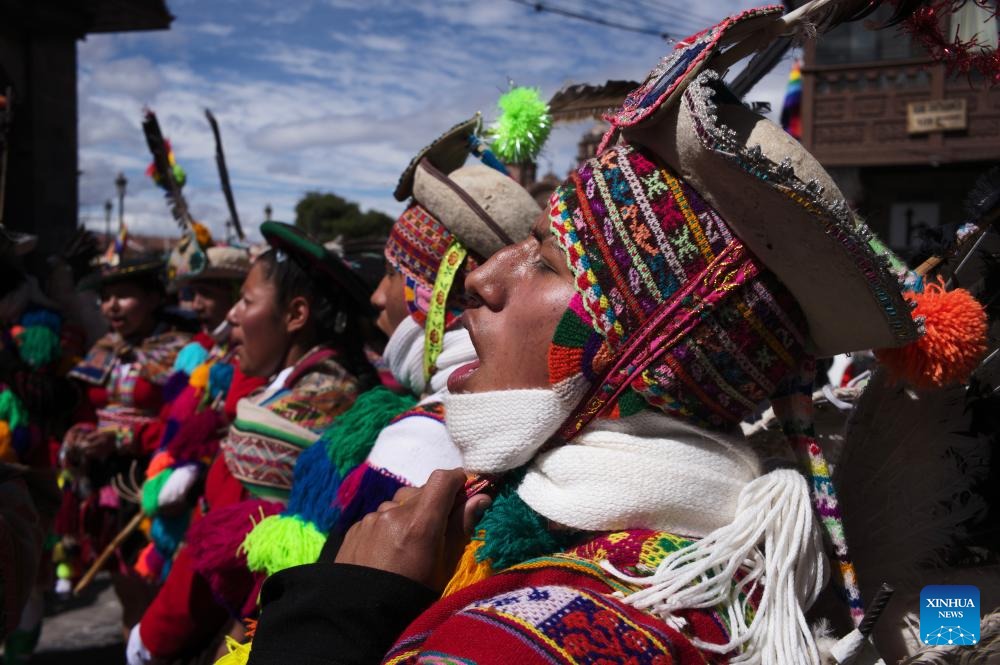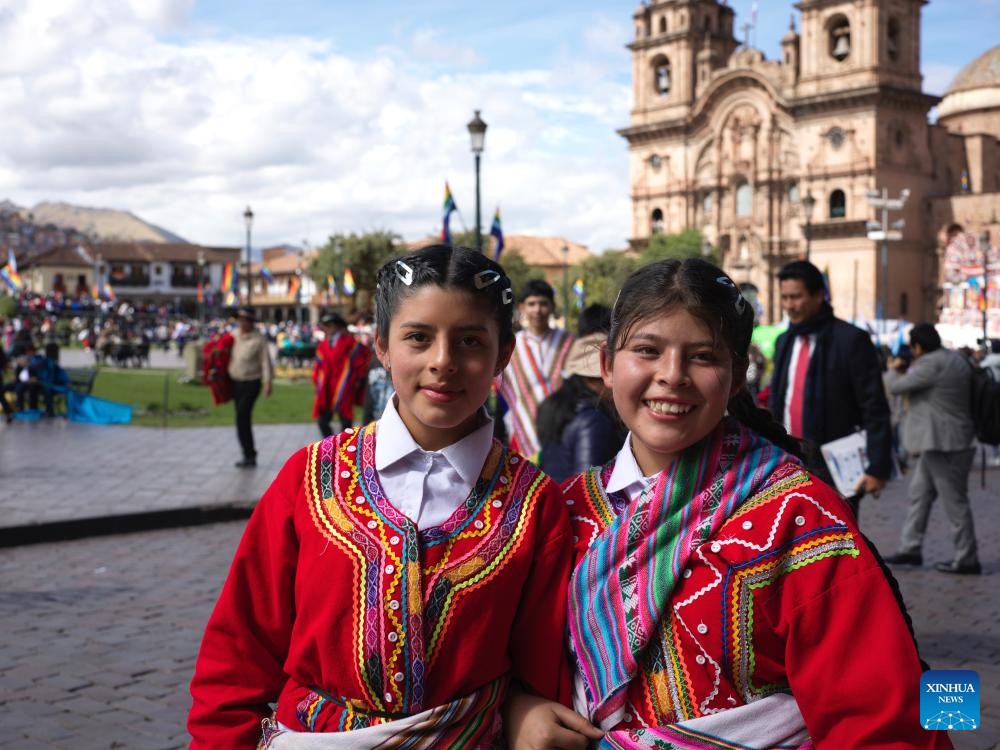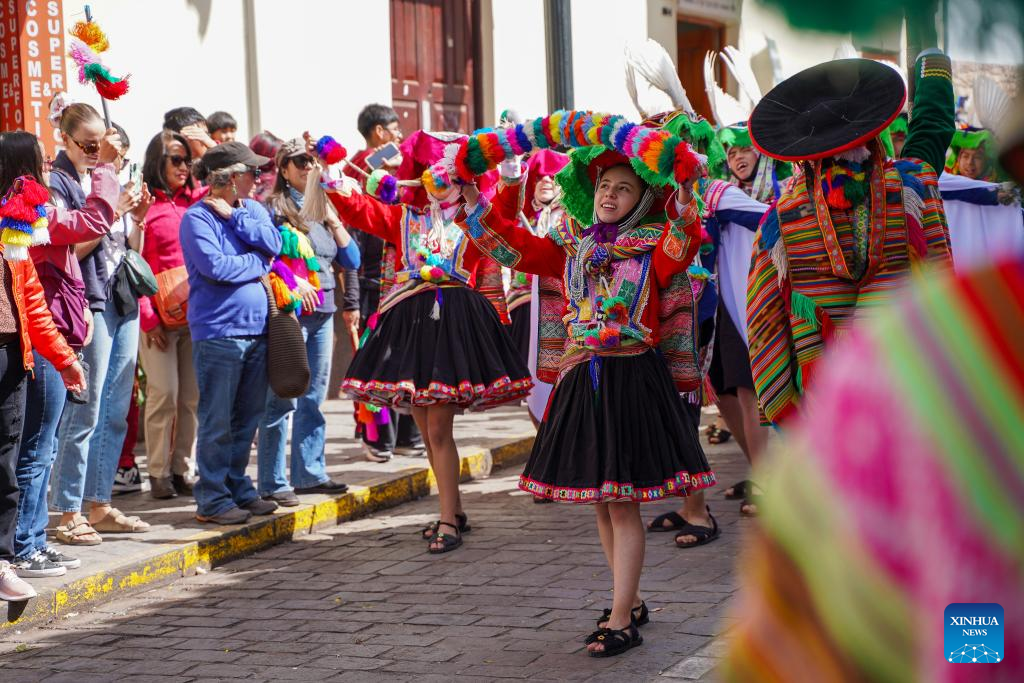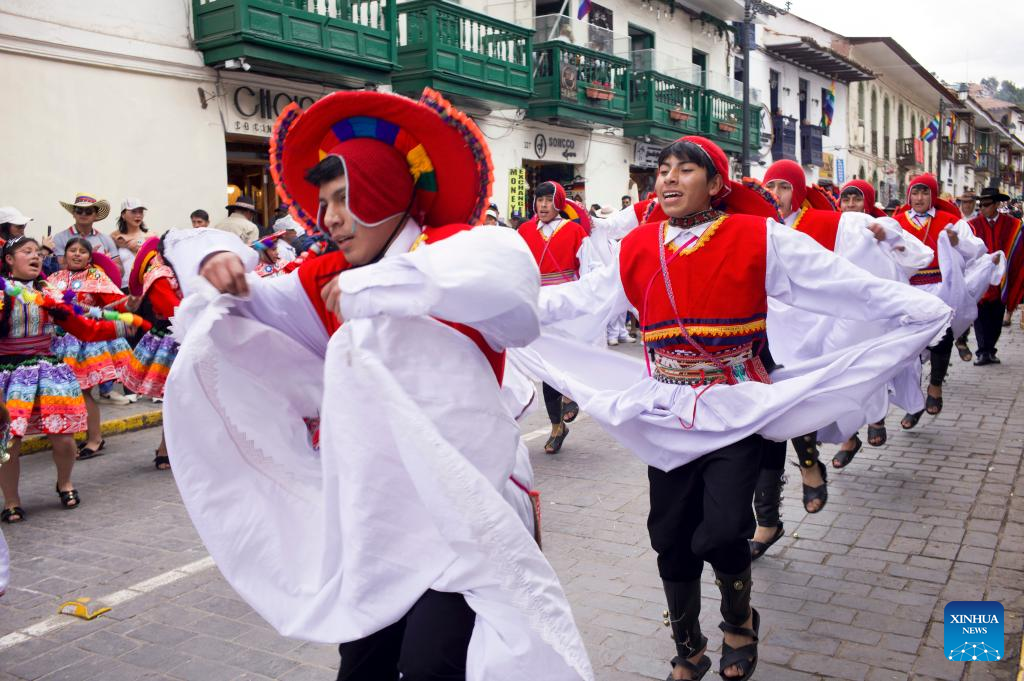Feature: Peru celebrates ancient Inca Festival of Sun
Source: Xinhua
Editor: huaxia
2025-07-01 11:45:00

This photo taken on June 20, 2025 shows people celebrating Inti Raymi, or the Festival of the Sun, in Cusco, Peru. (Xinhua/Zhao Kai)
by Meng Yifei, Zhao Kai and Zhu Yubo
CUSCO, Peru, June 30 (Xinhua) -- Each June, the Peruvian city of Cusco, nestled high in the Andes, comes alive with Inti Raymi, or the Festival of the Sun -- one of the most iconic celebrations of Inca heritage and spiritual renewal.
The annual event revives the rituals, mythology, and ancestral pride of a people whose centuries-old tradition of honoring the sun god Inti continues to shine brightly in modern Peru.
Chronicler Inca Garcilaso de la Vega, writing during the colonial period, famously recorded in Comentarios Reales de los Incas that the Inca did not worship idols or images, but rather the sun itself -- the source of life.
According to Inca legend, the Sun God Inti sent his children from Lake Titicaca with a golden staff to bring order to the world. When the staff sank into the earth in Cusco, the spot was deemed sacred, marking the founding of Tawantinsuyu, the Inca Empire that once stretched from present-day Colombia and Ecuador in the north to Argentina and Chile in the south.
For centuries, from this highland city nearly 3,400 meters above sea level, Andean peoples have observed the sun's path, transforming its rhythms into calendars, planting cycles and sacred ceremonies.
"June 21, the winter solstice in the southern hemisphere, marks the shortest day of the year and the symbolic rebirth of the sun," explained Eleazar Crucinta Ugarte, rector of the National University of San Antonio Abad del Cusco. "It is a great ceremony of reverence, inviting the sun to return and give warmth and life."
While modern celebrations peak on June 24, Inti Raymi still retains its essence -- a collective gesture of gratitude, renewal and cultural identity.
Today's festival blends theatrical performance with deep-rooted tradition. The reenactment begins at the Qorikancha (Temple of the Sun), continues through the Plaza de Armas, and culminates at the imposing Sacsayhuaman fortress, where hundreds of actors in traditional costumes and feathered headdresses pay tribute to their ancestors in Quechua, the ancient Inca language.
Key rituals include offerings of chicha de jora (a traditional corn-based drink) to Pachamama (Mother Earth), and the symbolic sacrifice of a llama, a sacred animal in Andean culture. Though symbolic today, the act evokes the grandeur of the ancient empire.
The celebration extends far beyond the formal performance. From early June, public and private schools across Cusco prepare with weeks of rehearsals. Students perform regional dances, guided by instructors who teach the traditional choreography and its meaning.
Archaeologist Santiago Gayoso, whose granddaughter performed this year, explained that the student dances often represent celebrations from specific communities. "Students rent traditional costumes, and the process strengthens both cultural identity and family ties," he said.
In the city's historical center, especially around the Plaza de Armas, the atmosphere is electric. Swirling multicolored skirts, fluttering flags, and the sounds of zamponas (Andean panpipes) and charangos (small stringed instruments) create an immersive celebration of life and heritage.
"Each group puts their heart into it," said Maria del Carmen Tinajeros, a visitor from Lima, noting that every community brings its own rhythm, color and identity to the festival.
For participants like Rodrigo Holgado, the event is both exhilarating and profound. "It's not just fun," he said, "it's a living culture."
Beyond its cultural depth, Inti Raymi is a powerful draw to tourists -- both domestic and international -- eager to witness a living expression of Peru's ancient past. The festival has become a national symbol and a testament to the enduring legacy of the Inca civilization.
As night falls, golden lights illuminate Cusco's cobblestone streets. Music and laughter linger in the crisp mountain air, as the ancient capital once again awaits the sunrise to continue a ritual as old as the empire that once called this place the center of the world. ■

This photo taken on June 20, 2025 shows girls posing in traditional costumes during Inti Raymi, or the Festival of the Sun, in Cusco, Peru. (Xinhua/Zhao Kai)

This photo taken on June 20, 2025 shows people celebrating Inti Raymi, or the Festival of the Sun, in Cusco, Peru. (Xinhua/Zhu Yubo)

This photo taken on June 20, 2025 shows people celebrating Inti Raymi, or the Festival of the Sun, in Cusco, Peru. (Xinhua/Zhao Kai)



